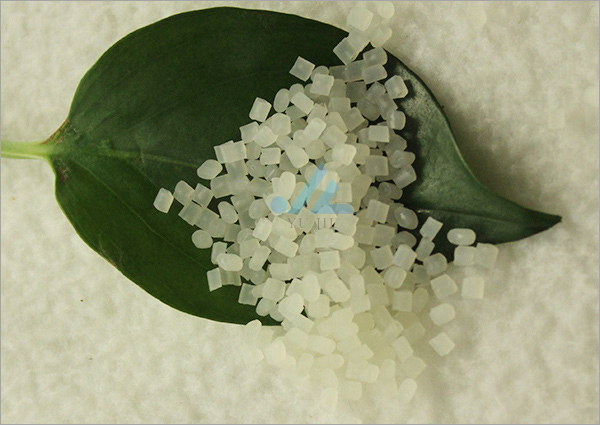- The Winter Solstice brings good fortune, and warmth awaits the return of spring. Yujie Chemical invites you to a warm winter appointment!
- The volume of industrial textiles is stable and the quality is improving with strong momentum!
- Under the warm winter sun, you must know these sun protection tips from Yujie Chemical!
- The cold of winter has arrived, and static electricity is coming. How can we take precautions in our daily life?
- Innovation and upgrading in the textile industry open up new development space!

- Tel: 0086-13957173655
- Email: zpl620504@163.com
- Add: Canghexia No. 36, Tiyuchang Road, Xiacheng District, Hangzhou, Zhejiang, China
Recently, some of the grey cloth factories have queued up for the goods, and the news of the dyeing factory's explosion of the warehouse has been rumored in the textile circle. Is it the peak season? It is clear that a while ago, various factories have also taken a break, started work, went to stock, and cut prices. How did the market reverse?
It is obviously inaccurate to say that the all-season season has come. This time, the market is like a "local peak season." According to market visits, the current hot-selling products can be roughly divided into two categories: market goods and elastic-type order fabrics. Most popular weaving factories and dyeing factories mainly process these two types of products. The weaving factories and dyeing factories, which are mainly engaged in other fabrics, did not feel the substantial changes in the market.
According to Wu, the head of a weaving factory that is engaged in the production of satin, their current orders for grey cloths have not changed from the previous period, and they are still between the inventory and the destocking. Another person in charge of the dyeing factory, which started with silk screen dyeing, said that the current situation is slightly better than the previous period, but compared with the same period of the previous two years, the dye tank is still not fully loaded, and the production capacity is only increased by 10% to 8-9%. about.
Hot product raids stirred the market
Most of the market goods are based on conventional fabrics such as polyester taffeta, nylon silk, imitation memory, etc. The characteristics are relatively clear: low price, large order quantity, fast delivery and low quality requirements. The elastic fabrics are relatively high-end, and the general order cost is high, the variety is mixed, and the process is long. These two types of products suddenly became popular in the market, and the market that had been calm for more than half a year was a little overwhelmed.
Due to the delivery problem, the elastic type of grey cloth is versatile and diverse, but because the fabric characteristics are generally not long-term, most of them only stay in the sample stage and lack the spot of the grey cloth. As the elastic market picks up a large number of elastic orders, the elastic fabric fabric factory has ushered in a great test, and it is difficult to guarantee the timely delivery of each order at full capacity.
The delivery problem at the printing and dyeing end is even more intense. Because the market has a large amount of goods, low requirements, and basically no need to invoice, the relative profit is relatively high, which is very popular among printing and dyeing factories. With the strong market entry, the production space of other fabrics has been basically squeezed. An old dyeing factory specializing in the production of disposable fabrics in Wujiang area. At present, the market has already piled up in the aisle, and they have not welcomed the order fabrics.
Quality problems, leisure and busyness in the moment of conversion for many people and machines, seems a bit difficult to adapt. The quality problem is the most direct response to this incompatibility. In the recent stage, weaving problems frequently occurred. On the one hand, due to the sudden hot sale of certain fabrics, the loose strings of the workers were tightened, which was a bit too busy and difficult to take care of, which caused the quality of the grey cloth. On the other hand, some weaving factories want to take advantage of the hot sale, and we will mix some of the original problem fabrics with the current quality of the better fabrics, which will not only consume the defective goods but also make profits. .
The printing and dyeing factory is accustomed to the low requirements of the market, and it is easy to relax the requirements and lower the standard when producing other fabrics. In the face of the printing and dyeing problems that arise, they are also accustomed to the disposal methods of the market, and it is difficult to accept normal rehabilitation and redo.
According to a trader, they have a lot of orders for elastics recently, but the grey cloth factory that often gets the goods is always making mistakes. The quality of the grey cloth, the delivery to the wrong dyeing factory, the delivery time is too late, and the exaggeration is that the fabric of the weaving is actually woven, and it has also been weaved for several kilometers. The dyeing factory has also come to a worse situation. Worker problems, dyeing tank problems, and pre-treatment problems have been greatly promoted. Now some factories have seen orders that have reached high demand and have been rejected.
The market is loose, so there is a reason for the increase in raw materials and dyeing fees.
Recently, the downstream weaving market is more active under the influence of market goods and elastic fabrics. This kind of favorable situation will not turn a blind eye to the upstream raw materials. This year, due to weak market conditions and shrinking downstream demand, raw material prices are still weak due to various speculations and economic and trade policies.
Analysis of the price trend of polyester yarn this year, polyester POY, FDY, DTY prices in the past month are all low in the year. On the other hand, raw material stocks have fallen sharply in the past week: polyester POY stocks fell by 4.5 days to 4 days, polyester FDY stocks fell by 4.5 days to 7 days, and polyester DTY stocks fell by 3.5 days to 19 days. This rapid decline in inventories is inseparable from the booming demand for downstream weaving.
This year's polyester production and sales performance is pulse production and sales, no continuity. Observing and analyzing the polyester production and sales is half a month short and there will be a small peak in seven days, which is also caused by the downstream replenishment. The most recent peak of production and sales reached the highest value of 390% in the year on August 14. In other words, a peak of production and sales will occur from August 21 to the end of August.
When the peak of production and sales meets the shrinkage of raw material inventory, plus the price at the low level, the final result is definitely that the raw material price immediately ends the shock adjustment and opens the upward channel.
Dyeing plants are most sensitive to changes in market conditions, and those dyeing factories that can process market and stretch fabrics will be annoyed by the influx of orders. Of course, the solution to this trouble is also very simple, that is, through the price mechanism.
This year, the entire printing and dyeing market was affected by the shrinking of downstream orders, and the price of the dyeing was inconspicuous. Even though various dye chemical plants have reduced production and stopped production because of safety and environmental protection, the downstream dyeing factories have passed for half a year, and there are few openings to increase prices. Most of them use the “super cost” to conceal the cost of dyeing and balance the cost. But now the situation is different. Those dyeing factories that can reject customer orders and press cards will have the courage and reason to raise prices in an instant.
The sudden hot sales of market goods and elastic fabrics changed the state of weaving, printing and dyeing for more than half a year, and laid the groundwork for the price increase of raw materials and dyeing. However, we must also rationally think about how long the "local peak season" brought by these two types of varieties can last, whether it can drive the entire textile market to "recover by the point", or be re-populated by the off-season. At this moment, it is important to follow the trend and grasp this rare "peak season", but blind follow-up may also be just "takeover".
- Under the warm winter sun, you must know these sun protection tips from Yujie Chemical!
- The Winter Solstice brings good fortune, and warmth awaits the return of spring. Yujie Che
- The volume of industrial textiles is stable and the quality is improving with strong momen
- The cold of winter has arrived, and static electricity is coming. How can we take precauti
- Innovation and upgrading in the textile industry open up new development space!
- Jinchun Polymer congratulates the successful convening of the 2025 National Academic, Tech
- Hangzhou Yujie Chemical Co., LTD. Non-woven fabric color masterbatch, welcome to purchase!
- The operation of China's industrial textile industry was generally stable in the first thr
- Don't let your guard down in autumn sun protection! Ultraviolet rays are still strong. Ple
- The textile industry forges new competitive advantages!



